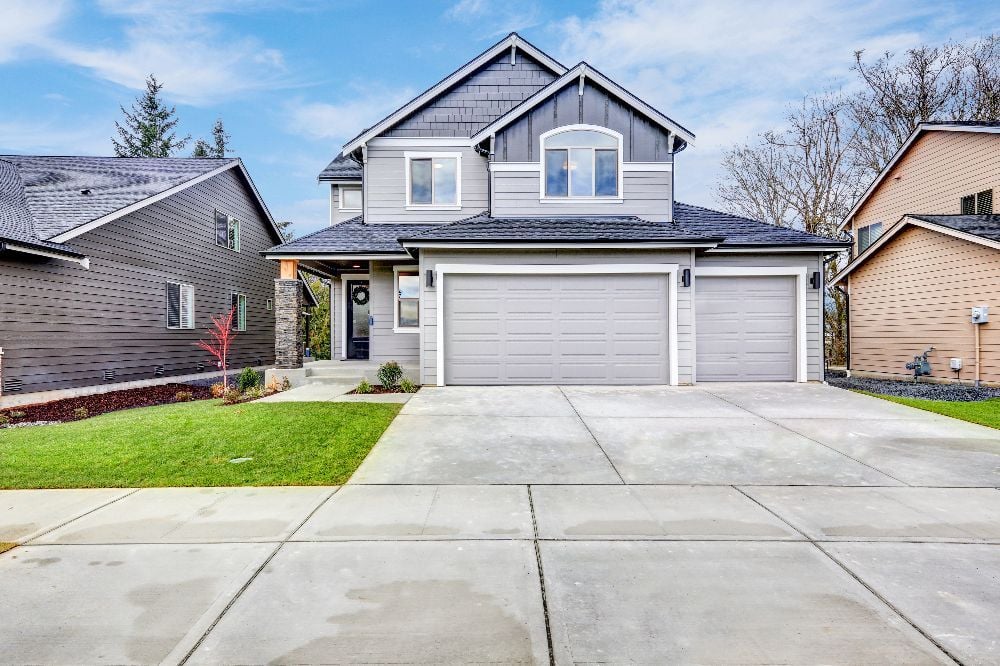
Learn why concrete slope is crucial to keeping your property free from water damage, and how you can repair it if you find your slope is settling.
Pouring new concrete is a complicated process with many variables to keep in mind. The slope of the concrete is one of these important variables that must be carefully considered during the process, as it can affect the concrete and your home throughout its entire lifespan.
If your existing concrete is beginning to settle, that carefully-calculated slope can get thrown off and cause serious problems with water around your home. A-1 Concrete Leveling has been lifting settled concrete back up to where it should be for over thirty years, and during this time we’ve seen just how important proper concrete slope can be.
This article will walk you through why concrete slope is so important, what proper concrete slope looks like, and discuss what happens if your concrete wasn’t poured with the right slope to begin with.
Why Is Concrete Slope Important?
When new concrete is poured, it should always be done with a slope away from important and expensive structures, like buildings and retaining walls, so that water runs away from them rather than towards them.
The main goal of concrete slope should be to protect the most expensive areas of your property, which is why you want your water to run down the concrete and drain away from houses or other buildings.
Improperly draining or excessive water can cause all sorts of problems, like standing water around your property, erosion and concrete settling, and even leaky, moldy basements. Ensuring your concrete slopes and drains properly is crucial to preventing water damage.
What Is Proper Concrete Slope?
The most ideal concrete slope for your property depends on a lot of different variables, like how much precipitation the area receives and how the water runoff naturally flows.
The general recommendation for creating a proper concrete slope is to allow for ¼” of a drop per each foot of length, but this can be more or less depending on the expected precipitation and landscape of the property. Keeping in mind the position of adjacent buildings and the direction of flow when calculating the slope is also important for proper drainage.
At the end of the day, the purpose of good concrete slope is to cause water to drain away from buildings, retaining walls, foundations, and other expensive structures. If the slope achieves this goal, it can greatly help keep your property safe from water damage.
Repairing Concrete Slope
If your concrete was originally poured with a good slope but has settled over time, lifting up the sunken sections with concrete leveling can help restore its drainage properties.
The concrete leveling process works by drilling small holes in settled concrete slabs, then pumping a leveling compound underneath to create a strong base to lift and support the slabs.
If you have sections of concrete that are now sloped toward your house rather than away from it, or water is now puddling on the surface rather than draining off, concrete leveling is a cost-effective and quick way to restore the slope of your concrete and help fix the water problems you may be facing.
What happens if my concrete slope wasn’t poured properly?
Concrete leveling works by bringing settled slabs back up to their original position, so if your concrete wasn’t originally designed with proper slope, leveling the concrete won’t be able to erase the drainage and water problems you’re experiencing.
Also, if your concrete was poured with dips or places where water could puddle, lifting the slabs back to their original position won’t be able to eliminate them, either.
Read more: What to Expect When Leveling Concrete for Water Problems
What’s Next?
Now that you know how important it is to have proper concrete slope around your property, you can keep an eye out for areas that may be settling and throwing it off.
Lifting settled slabs and keeping a good, consistent slope away from important buildings and other structures will minimize the potential for expensive and avoidable water damage.
If you are struggling with settled concrete or poor drainage due to improper concrete slope, get in touch with an A-1 Concrete Leveling expert to schedule a free onsite consultation and estimate!
Click Here to Find Your Nearest Location and Receive a FREE Estimate
Want to know more about maintaining and repairing your concrete? Check out these topics from our Concrete Academy:
Sarah Etler joined A-1 Concrete Leveling after receiving her Bachelor of Arts degree in English from Northern Kentucky University. As A-1's Content Marketing Manager, she works closely with industry experts to produce content that will best answer questions related to concrete repair and maintenance practices. Sarah loves living a life full of discovery and is excited every day to see what new things she can learn and share with those around her.
Topics: